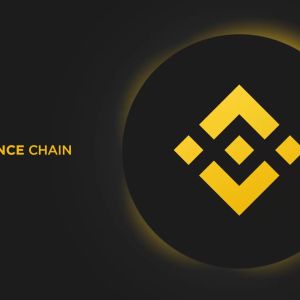Market Pulse
The Chicago Mercantile Exchange (CME) has officially launched options trading for Solana (SOL), marking a pivotal moment for the crypto derivatives market and Solana’s standing within institutional finance. This move by one of the world’s leading derivatives marketplaces signifies a deepening maturation of the digital asset space, extending regulated trading vehicles beyond Bitcoin and Ethereum to a prominent altcoin. The introduction of SOL options is poised to attract a new wave of institutional capital, providing sophisticated tools for hedging, speculation, and risk management within a regulated framework.
The Significance of CME’s Entry into Solana Derivatives
CME Group’s decision to offer Solana options is a powerful endorsement of SOL’s legitimacy and growing prominence. For years, CME has been a gateway for traditional finance institutions to gain exposure to cryptocurrencies, initially with Bitcoin futures, then options, and later expanding to Ethereum. By adding Solana to its roster, CME is not only recognizing SOL’s market capitalization and technological advancements but also responding to a clear demand from institutional clients seeking diversified exposure within a trusted, regulated environment. This expands the narrative beyond the top two cryptocurrencies, suggesting a broader acceptance of high-performance layer-1 blockchains.
This step is crucial because it bridges the gap between the often-volatile, unregulated crypto spot markets and the structured world of traditional finance. Institutions, pension funds, and asset managers typically operate under strict compliance requirements that prevent them from interacting with less regulated exchanges. CME’s offerings remove this barrier, allowing these large players to engage with Solana through a familiar and compliant platform, potentially unlocking significant liquidity and capital inflows into the SOL ecosystem.
Understanding Solana Options: Mechanics and Market Benefits
Solana options contracts grant the holder the right, but not the obligation, to buy (call option) or sell (put option) a specified amount of SOL at a predetermined price (strike price) on or before a certain date. These derivatives are invaluable tools for various market participants:
- Risk Management and Hedging: Institutions holding significant amounts of SOL can use put options to protect against downside price movements, effectively locking in a minimum selling price without having to sell their underlying assets. Conversely, those with short exposure can hedge using call options.
- Directional Speculation: Traders can speculate on SOL’s future price direction with leveraged exposure, without needing to purchase or short the actual asset. This can amplify returns, though it also magnifies potential losses.
- Price Discovery and Liquidity: The introduction of options trading adds another layer of sophisticated price discovery. The volume and open interest in options contracts can provide insights into market sentiment and anticipated price levels, contributing to overall market efficiency and liquidity.
- Yield Generation: Strategies like covered calls can allow SOL holders to generate additional income from their holdings in sideways or moderately bullish markets.
These sophisticated financial instruments provide flexibility and nuanced strategies that are not possible with simple spot trading, catering to the complex needs of institutional portfolio managers.
Implications for Solana’s Ecosystem and Institutional Flow
The launch of CME Solana options is a significant bullish catalyst for SOL. Increased institutional participation typically leads to higher trading volumes, reduced price volatility (due to hedging activities), and a more robust market structure. It also lends credibility to Solana’s blockchain, known for its high transaction throughput and low fees, validating its technological prowess and economic model.
Moreover, this development sets a precedent for other established altcoins. If Solana options prove successful, it could pave the way for CME and other regulated exchanges to consider offering similar products for other prominent digital assets. This gradual expansion of regulated derivatives products for altcoins is a key indicator of the crypto market’s continuous integration into the broader global financial system.
Regulatory Context and Future Market Evolution
CME’s operations are overseen by the Commodity Futures Trading Commission (CFTC) in the U.S., ensuring a high level of regulatory compliance and market integrity. This regulated environment is precisely what institutional investors require to participate with confidence. The move underscores an evolving regulatory landscape where certain digital assets are increasingly being viewed as commodities, making them suitable for derivatives trading under existing frameworks.
This development is not just about Solana; it’s about the future trajectory of crypto markets. It signals a shift towards greater institutional embrace and regulatory clarity, which are foundational for sustained long-term growth. As more sophisticated products become available on regulated platforms, the barrier for traditional financial players to enter the crypto space continues to lower, fostering a more mature and interconnected global financial ecosystem.
Conclusion
The introduction of Solana options on the CME represents a significant milestone for both Solana and the wider cryptocurrency market. By providing regulated, institutional-grade derivatives products, CME is further legitimizing digital assets and offering sophisticated tools for risk management and speculation. This move will likely enhance SOL’s market depth, attract substantial institutional capital, and serve as a crucial indicator of the crypto market’s ongoing maturation and integration into traditional finance.
Pros (Bullish Points)
- Provides institutional investors with regulated exposure to Solana, enhancing legitimacy.
- Offers sophisticated hedging and risk management tools, potentially increasing market stability.
- Could significantly boost SOL's trading volume and liquidity.
- Sets a precedent for other altcoins to gain similar regulated derivatives products.
Cons (Bearish Points)
- Increased complexity and potential for sophisticated speculation could lead to higher volatility in some scenarios.
- Requires deep understanding of options mechanics, which may be prohibitive for retail investors on CME.
- Potential for market manipulation if large positions are taken without sufficient oversight (though CME is regulated, risks still exist).



